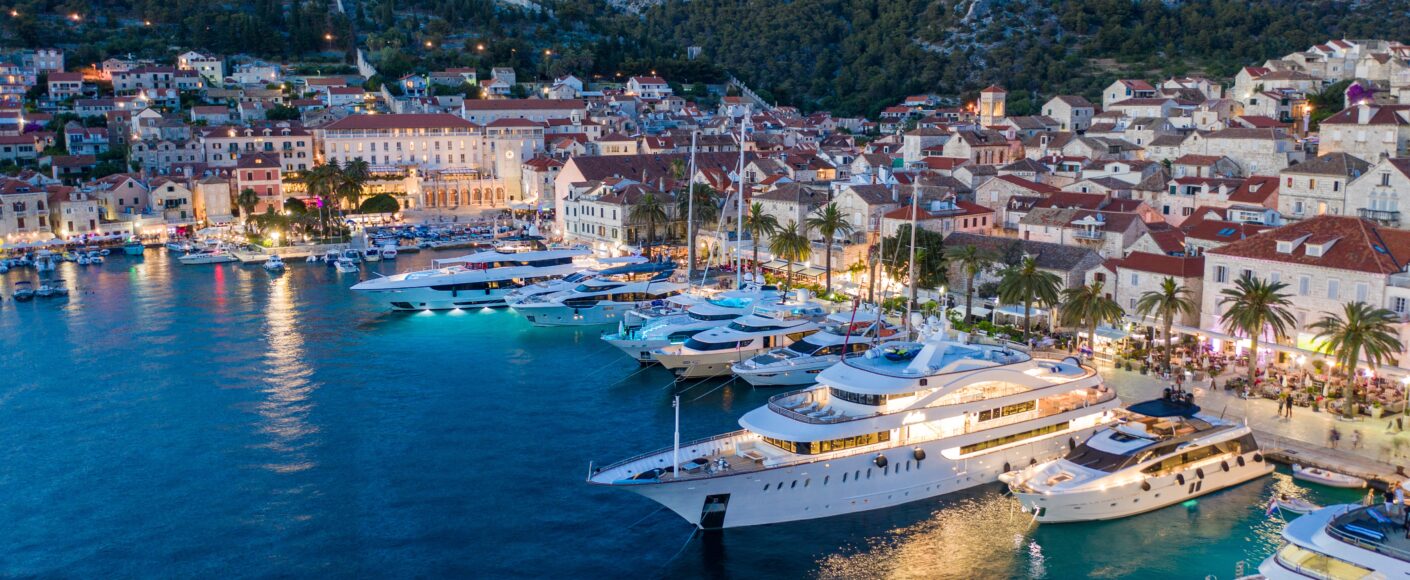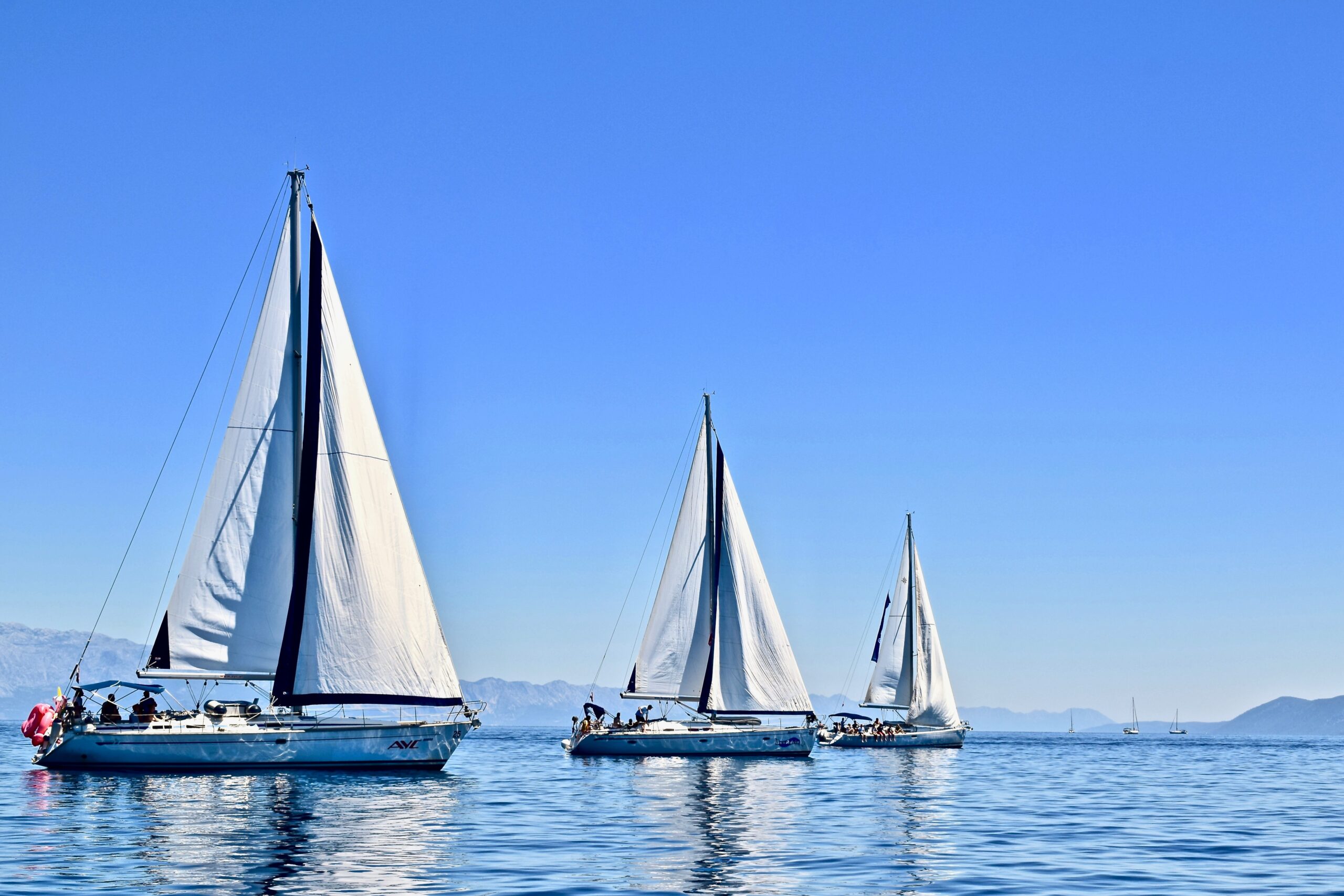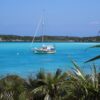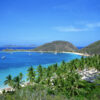Croatia

With a breathtaking coastline, crystal clear sea and more than a thousand islands, sailing in Croatia is like a dream. Discover the spectacular landscape, wonderful untouched bays, countless islands and enjoy the clear, clean sea. Sailing in Croatia allows you to experience the most beautiful hidden places.
It’s surprising how much you can see in a week. The diverse appeal of Croatia’s many islands, islets and cliffs, along with a variety of land ports and anchorages, will keep you wanting to come back for more!
General about Croatia
The Adriatic Sea is the bay of the Mediterranean Sea that is the deepest part of the European mainland. The coast of the Adriatic Sea in Croatia is 1,777.3 kilometers (1,104.4 miles) long, and it is the most indented coast of the Mediterranean. There are 78 islands, 524 islets and 642 rocks along the coast, so Croatia is rightly called the “land of a thousand islands”. The Adriatic Sea along the Croatian coast stands out for its exceptional transparency and intense color, which with its picturesque coast contributes to a unique landscape.
The mild Mediterranean climate with 2,400 to 2,800 hours of sunshine per year also contributes to the natural beauty and picturesqueness of the Croatian coast, which ranks it among the sunniest European coasts.
Among all the Slavic countries, Croatia is the only one in which maritime and Mediterranean orientation are deeply rooted in the tradition and everyday life of its inhabitants.
On January 1, 2023, Croatia became part of the Schengen visa-free area. This means that border and customs checks at the borders between Croatia and other Schengen members have been abolished for people crossing the borders by road, rail or water. From March 26, 2023, there will be no border checks at airports upon arrival in Croatia from other Schengen member states – this includes most European Union countries. Also, Croatia officially adopted the euro as its currency, replacing the Croatian kuna.
Nautical infrastructure in Croatia
Croatia contains a number of destinations for sailing routes that are accessible to everyone. Beginner sailors can charter a boat with a qualified skipper, cruise around the islands and learn as much as they want about sailing. Those who seriously want to learn to sail or improve can attend a course at one of the sailing schools.
There are more than 50 marinas in Croatia, about half of which are state-owned, recognizable by the acronym ACI. In the marinas you will have access to toilets, showers, electricity and water from shore, although electricity and water supply may be limited on more remote islands. There are restaurants, a shop and a cafe in the marinas, and in some there are night clubs, swimming pools and other facilities.
If you are staying outside the marina, a fee must be paid in some anchorages.
Climate and cruising conditions in Croatia
The nautical season in the Dalmatian coast lasts from May to the beginning of October. The warmest and sunniest days are in August and July, but then there are also the biggest crowds on the coast. Then popular marinas and ports can be difficult to access due to crowds, and prices are at their peak.
Croatia is off-season from October to April, when many shops, restaurants and hotels are closed, and opportunities to tour the island are limited. But many serious sailors prefer to sail in the off-season in the more challenging weather conditions of April and October.
Croatia does not have a big difference in tides. There are occasional strong currents, in channels or river mouths.
In summer, the weather is usually calm and sunny, with the occasional rare thunderstorm.
Throughout the year, but rarely in summer, there is a possibility of a strong wind – gale from the northeast.
In the summer, the northwest mistral wind prevails, but there are also days without the appearance of wind when it is necessary to move on the boat’s engines.
Locations for sailing in Croatia
Whichever part of the Adriatic coast you choose for sailing, you will not regret it. The most popular is to start from the city of Split, the second largest city in the country. Split is the ideal place to start a tour, with some of the most popular and well-known islands, Hvar, Brač, Vis and Korčula.
In the north, the Istrian peninsula and Kvarner Bay have a high concentration of marinas and a more cosmopolitan atmosphere than Dalmatia, due to the ubiquitous Italian influence. If gastronomy and culture are important to you, this may be your sailing area. Stunningly popular islands like Lošinj, Rab and Brijuna are magnets for luxury yachts. What distinguishes this area from the south of Dalmatia is the diversity and smaller number of islands.
If you start your sailing from Zadar, Biograd, Murter or Šibenik, you can visit the easily accessible Kornati. The Kornati archipelago with its 152 islands, islets and rocks is the densest group of islands in the Mediterranean. The islands around Šibenik are also very special, they are less deserted and remote, but still mostly undiscovered.
Upstream from Šibenik, there is Skradin with a large marina, a favorite for boaters who want to explore the Krka waterfalls.
Central Dalmatia is the most popular part for starting sailing. You can start your sailing in Trogir or Split and visit the famous islands of Šolta, Brač, Hvar, the Hell Islands and Vis. Split has a lot to offer, and it dates back to the late 3rd century, born when the Roman emperor Diocletian decided to build his palace here. There is also an international airport in the nearby town of Kaštela near Trogir, less than 30 minutes’ drive away with flights from all major European cities, making it a very affordable holiday in Croatia.
You can also start from the southern part of the Adriatic coast, the city of Dubrovnik, and see the famous medieval stone walls and start sailing towards the islands of Mljet, Korčula, Lastovo and Vis, and visit the town of Ston on Pelješće.
Diving in Croatia
The summer months at sea are not only reserved for lounging on the beach, but are ideal for exploring underwater beauty. The Adriatic Sea is home to beautiful marine organisms, corals, periwinkles, other small plants and animals, and numerous species of fish. The Croatian undersea hides more than 110 registered and described diving destinations that include scenes of ancient sailing ships and coral meadows on vertical underwater walls, sea caves and wrecks of warships inhabited by shoals of fish.
Nightlife in Croatia
Apart from the rich nautical world, Croatia is also a famous summer party destination. You can dance the night away at some of the best entertainment destinations in the region. From beach festivals to luxury nightclubs with private pools, Croatia has something for everyone who wants to have fun while on vacation. Some of the most famous places for entertainment on the Croatian coast are: the island of Pag (Zrće), the island of Murter (Tisno), the city of Split (Ultra music festival), the island of Hvar (Hvar), Pula…






